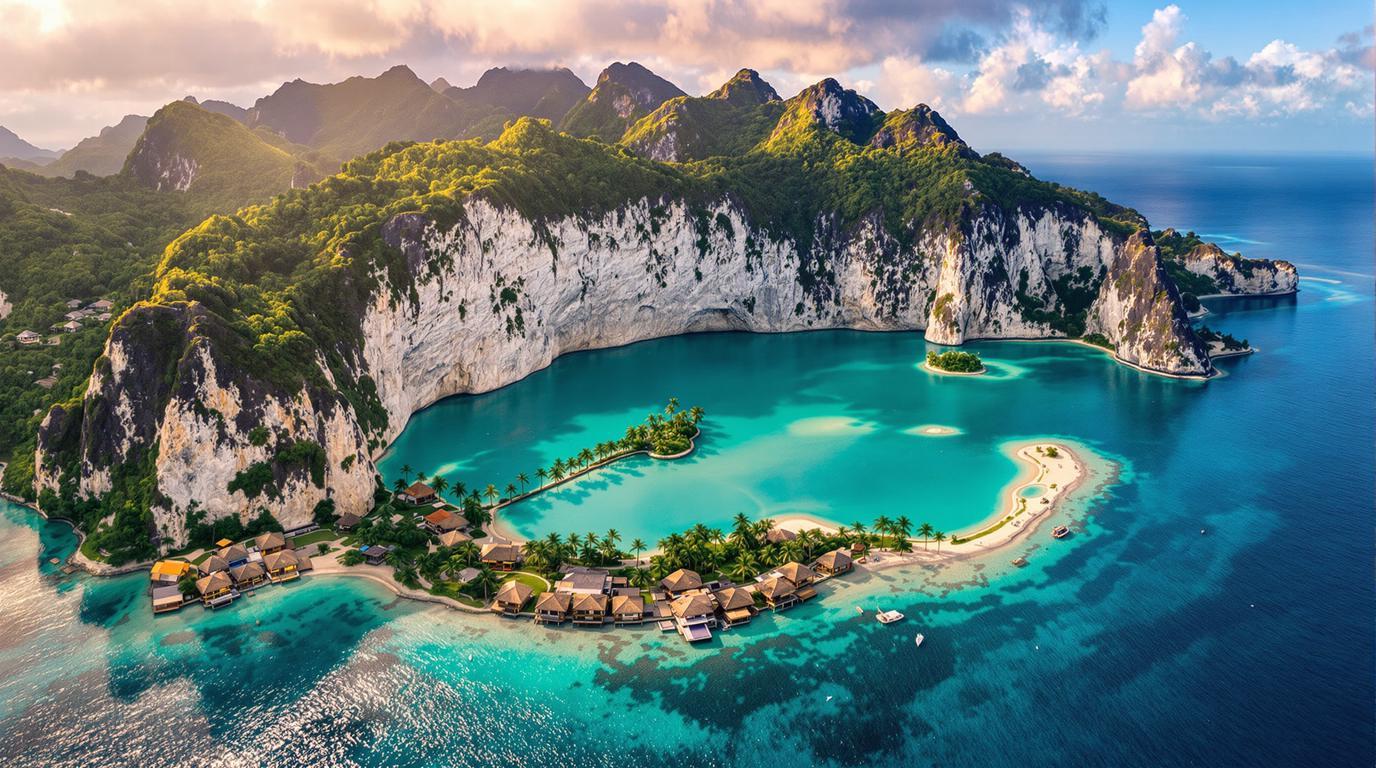Barely 230 people inhabit the paradisiacal island of Mitiaro, a hidden gem in the Cook Islands where two pristine freshwater lakes shimmer amid ancient fossilized coral formations. This remote Pacific outpost remains one of the last authentic Polynesian experiences untouched by mass tourism.
The island where time stands still
Unlike its famous neighbor Rarotonga, Mitiaro operates on island time. Here, locals navigate narrow dirt roads between four tiny villages nestled among coconut plantations. The simple, traditional homes with corrugated iron roofs and weathered wood facades tell stories of generations past.
A local elder once told me,
“In Mitiaro, we don’t have the luxury of fancy hotels, but we have the luxury of peace that money cannot buy.”
Ancient makatea formations hide underwater treasures
The island’s most distinctive feature is its makatea – fossilized coral cliffs rising 6-10 meters above sea level. These limestone formations harbor a fascinating secret: an underground network of freshwater caves and pools with crystal-clear waters.
Vai Nauri and Vai Marere caves offer adventurous travelers the chance to swim in turquoise pools hidden beneath the jungle canopy. Local guides recommend visiting at midday when sunlight filters through openings, creating an otherworldly blue glow.
Twin lakes: Home to the sacred itiki
At Mitiaro’s heart lie two freshwater lakes, Rotonui and Rotoiti. These dark, glass-like waters serve as home to the itiki – freshwater eels considered a delicacy and culturally significant to islanders. If you’re seeking similar freshwater wonders, Polynesia’s most spectacular secret waterfalls might also captivate your imagination.
Cultural immersion among hospitable locals
What Mitiaro lacks in luxury accommodations it makes up for in authentic cultural experiences. Visitors typically stay in homestays with local families, sharing meals and stories.
“Our island may be small, but our hearts are as vast as the Pacific,”
shares Mama Tere, who welcomes guests into her home and teaches traditional crafts like tivaevae (hand-dyed bedspreads) and maire lei-making.
The sweetest maire in the Pacific
Mitiaro is famous throughout the Cook Islands for its fragrant maire plants. These aromatic shrubs are harvested and woven into leis prized throughout Polynesia for their sweet, lasting scent. Morning is the ideal time to visit the maire fields when golden light enhances the glossy leaves.
If you’re drawn to island paradises with unique climates, you might also appreciate this Indian Ocean gem with 10 hours of daily sunshine.
Sunday singings: Harmonies that touch the soul
For an unforgettable cultural experience, attend a Sunday church service at Takaue Church. The harmonized hymns sung in Cook Islands Māori will leave you speechless. The white picket-fence church fills with joyful voices around 10 AM, creating a musical experience unlike any other.
Practical considerations for the adventurous
Visiting Mitiaro requires planning. The island has no hotels, only homestays arranged through the Cook Islands Tourism Corporation. Air Rarotonga serves the island with occasional flights, though weather delays are common. If seeking similar off-the-beaten-path destinations, consider this tiny Caribbean island with 33 pristine beaches.
May through October offers the most pleasant climate, with temperatures hovering around 24-26°C. Though basic, accommodations provide authentic immersion into island life at reasonable costs ($50-100/day).
Culinary traditions: From the lake to your plate
Food in Mitiaro connects directly to the land and sea. The specialty? Freshly caught itiki eels prepared in coconut cream. Markets in Mangarei village display colorful arrays of taro, breadfruit, and fresh coconuts. Culinary enthusiasts might also appreciate this Italian city that rivals Europe’s food capitals.
A place where authenticity still exists
As the sun sets over the makatea cliffs, painting the coral formations in warm amber hues, it’s impossible not to feel you’ve discovered something precious. For travelers seeking genuine experiences free from tourist traps, Mitiaro offers what many destinations promise but few deliver – a glimpse into a way of life largely unchanged by time, similar to this Mediterranean gem with Europe’s perfect climate.
In a world of manufactured experiences, Mitiaro remains real – a place where fishermen still cast nets at dawn, where eels swim in ancient lakes, and where visitors aren’t tourists but welcomed friends.
